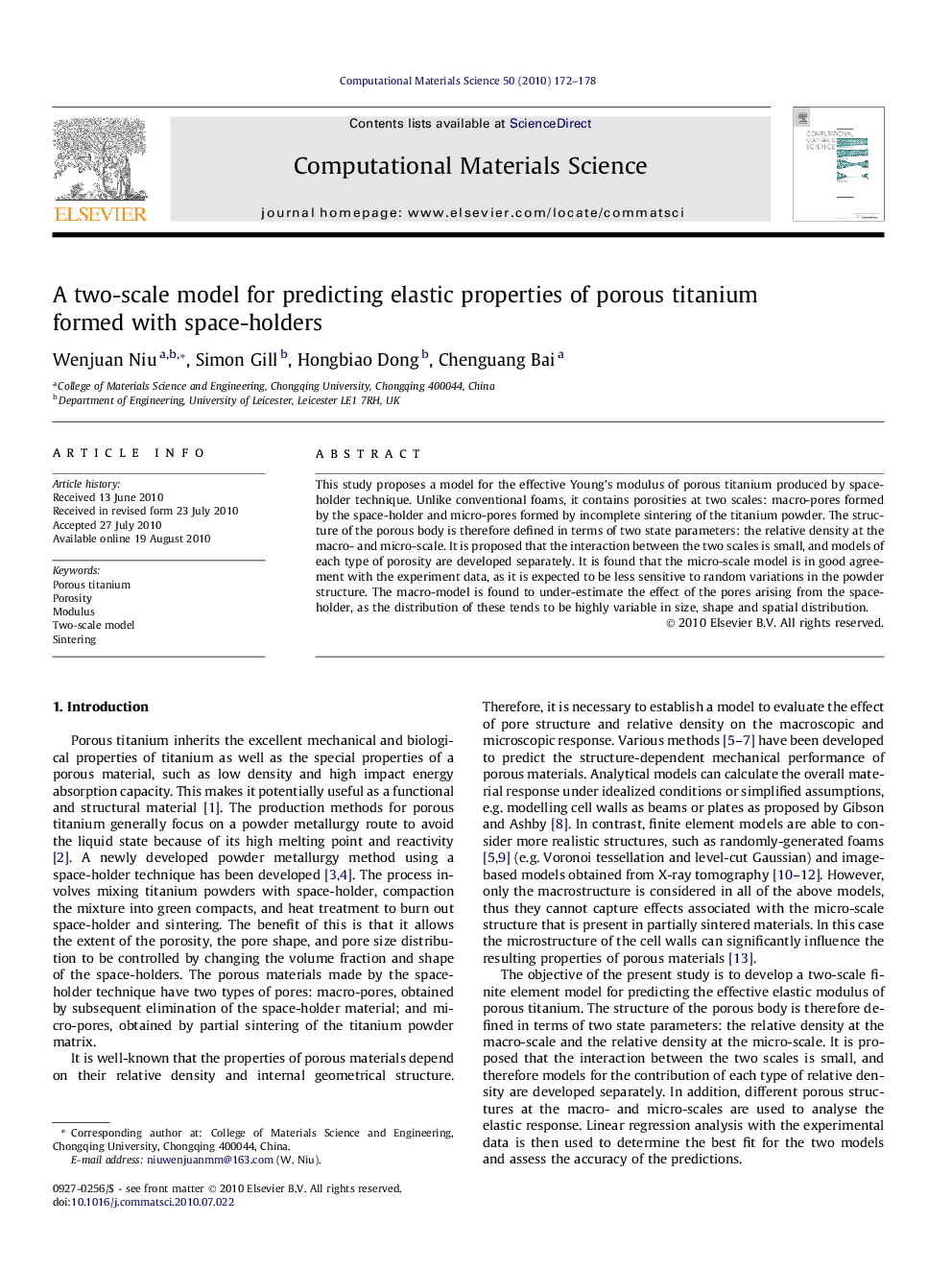| Article ID | Journal | Published Year | Pages | File Type |
|---|---|---|---|---|
| 1562437 | Computational Materials Science | 2010 | 7 Pages |
Abstract
This study proposes a model for the effective Young's modulus of porous titanium produced by space-holder technique. Unlike conventional foams, it contains porosities at two scales: macro-pores formed by the space-holder and micro-pores formed by incomplete sintering of the titanium powder. The structure of the porous body is therefore defined in terms of two state parameters: the relative density at the macro- and micro-scale. It is proposed that the interaction between the two scales is small, and models of each type of porosity are developed separately. It is found that the micro-scale model is in good agreement with the experiment data, as it is expected to be less sensitive to random variations in the powder structure. The macro-model is found to under-estimate the effect of the pores arising from the space-holder, as the distribution of these tends to be highly variable in size, shape and spatial distribution.
Related Topics
Physical Sciences and Engineering
Engineering
Computational Mechanics
Authors
Wenjuan Niu, Simon Gill, Hongbiao Dong, Chenguang Bai,
